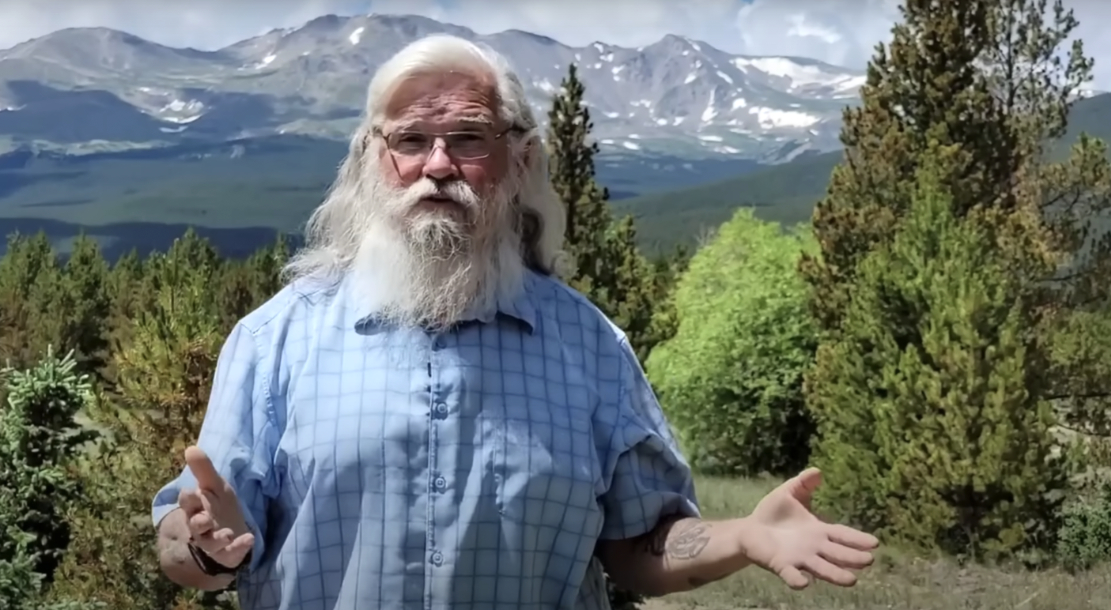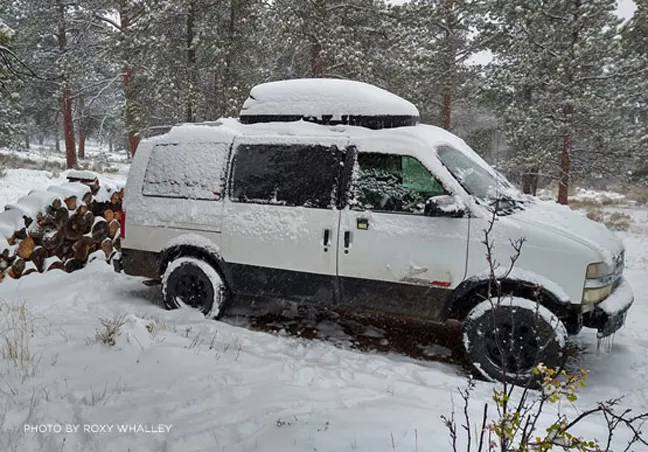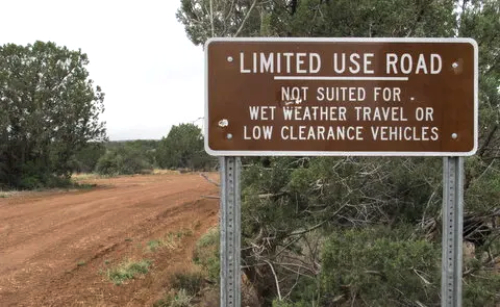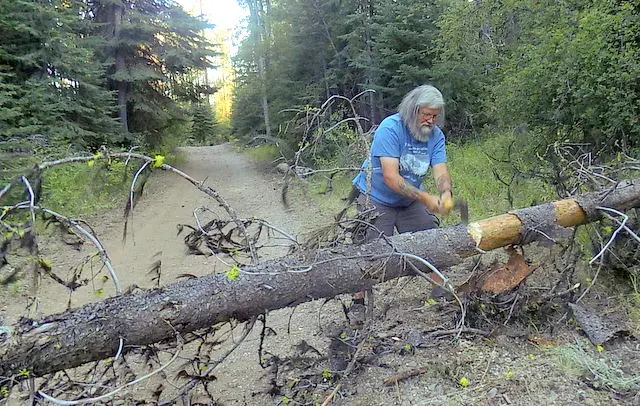
I’VE GOTTEN A LOT OF LETTERS from a lot of people over the years saying things like, “You know, Bob, you’re suggesting we come out and spend time on public land, but what happens if I go out there and break down, or I go out there and go for a walk and I fall and break my leg? How am i going to get help?”
That’s what I want to answer. I want you to be aware the consequences are severe if you’re not prepared. But it’s so easy to be prepared. So I’m going to give you nine rules that will help keep bad luck from turning tragic. But let me start with three stories of people who weren’t prepared for trouble and made poor choices.
Ronnie and Beverly Barker
In late March of 2022, Ronnie and Beverly Barker of Indianapolis went missing as they were traveling from Reno to Las Vegas in their RV, with a car towed behind. They had decided to take a shortcut suggested by their GPS, only to become stuck in mud on an unpaved mountain road. After a few days they decided to unhitch their car and try to drive out. They became stuck again. By the time they were found, Ronnie had died of dehydration and Beverly was transported to a hospital.
Albert and Rita Chretien
In March of 2011, Albert and Rita Chretien disappeared while traveling from their home in British Columbia to a trade show in Las Vegas. After consulting their paper map and GPS they took a more scenic route through mountainous terrain where they became stuck in mud and snow. After three days of trying to dig their way out, Albert decided to walk out for help, leaving Rita in their van. She was found alive 49 days later, eating one hard candy and a bit of trail mix a day, with some fish oil pills. Albert’s remains were discovered by hunters a year and a half later where he had taken shelter under a tree during a snow storm.
James and Katie Kim
During Thanksgiving of 2006, James and Katie Kim and their two young children were on their way back to San Francisco after visiting friends in Seattle and Portland. They were driving south on I-5 and wanted to cut over the mountains to the coast and spend the night in Gold Beach, Oregon. Having missed the exit for Highway 42 in the darkness, and driving an hour farther without another exit, they consulted a map and decided to follow a small mountain road west — one that was often used in summer but was nearly impassible in winter. One on that road, they took a wrong turn down a logging road. It was three days before anyone took notice of the family’s absence, and it was another six days before Katie and the children were discovered. James had set out on foot to get help. He made it 20 miles before dying of hypothermia.
In 1995, a couple had taken their RV up the same road as the Kims. It was in a shoulder season, not really winter, but they were hit by a bad snowstorm. They were stuck for 20 days, but since they stayed in their RV with food, water and heat, they survived.
What should you do and not do when traveling in remote places?

Don’t panic
If you’re a nomad you’re in your home, and you should have plenty of food and water. You might also have a water filter so you can safely use wild water sources. You have extra clothing and blankets. Don’t panic, just sit tight. Your home is your cocoon and you can be there for a month if you need to. You might not be happy but you’ll be safe.

Don’t underestimate the weather
From autumn to spring, whether at high elevations or low, from north to south, there is a risk of snow and freezing temperatures. This is especially true if you’re away from heat-producing cities. Likewise, summers can bring life-threatening heat even in the northern states. And most regions have seasons of heavy rain. As we’ve seen this year, flooding can happen in unsuspected places with unheard of intensity. And even with normal levels of rain, unpaved roads through public land can turn into impassible mud traps.

In his book Blue Highways, William Least Heat-Moon tells of being trapped by a surprise blizzard in the mountains of Utah. In May. On a paved highway. So dirt roads aren’t the only place to exercise caution. And pay attention to forecasts. When in doubt, ask locals if a certain route is passible.

Don’t overestimate the roads
As we learned from the tragic cases I mentioned above, just because there’s a line on a map it doesn’t mean it’s a passible road at that time of year, under the current conditions, in your type of vehicle. Forest Service and BLM roads almost always get rougher, narrower and steeper the farther you get from pavement. There might be locked gates, water crossings, washouts, deep sand. And, if you decide at some point to retrace your route, there might not be room to turn your rig around. Again, when in doubt, ask locals or check conditions with rangers, law enforcement, or fire departments.


Don’t trust GPS
Standard GPS is intended for use on paved roads. Unless you have special stand-alone devices or apps designed for off-pavement use, be very skeptical when GPS or things like Google Maps want to route you onto a dirt road. It’s better to take a much longer route on pavement than a “shortcut” that might lead you into danger.
Oh, and while we’re at it, don’t expect to have a cell signal so you can call for help.

Don’t keep going
Once you know you’re lost and in trouble, stop! The odds of the “road” getting better are very slim.
Don’t risk even worse conditions by turning down another road. An old wisecrack says that with four-wheel-drive you’ll just be farther from help when you finally get stuck. The same can be said about wandering a network of dirt roads in search of a way back to pavement. You’ll be farther from help. So if the “road” is getting sketchier, if you’re not stuck, it’s better to stop, clear your head, assess your situation, wait until morning if necessary, then go back the way you came — if you can.

Stay with your vehicle
Unless you’re physically able, have appropriate clothing, and can carry enough food and water, don’t try walking out. Sit and wait for rescue. You have a much better chance of survival in your rig. Also, a vehicle is much easier to spot than a person.
Whichever you choose to do, try to stand out from your surroundings. For example, if you’re in the snow with a white rig, display something large and colorful.
Above all, don’t panic. Be prepared and wait.

Tell someone else where you are going
The people mentioned above changed their routes midway without telling anyone else. If they had informed someone, they would have been found sooner.
Tell someone about your change while you still have a cell signal. If you’re considering an unfamiliar shortcut, and you’re out of cellular range, stick to your original route.

Put safety before plans
If you have an appointment, a reservation, an event, a holiday, or whatever, and you’re running behind schedule, resist the temptation to take shortcuts into unknown territory. It’s better to be late than to not arrive at all.


Have a personal locator beacon
The single most important thing you can do — and I’m going to suggest every single nomad go out today and buy one of these — is to have a personal locator beacon (PLB). There are several types with various capabilities.
For a one-time purchase price, the very basic models perform only one function: they send a distress signal and your location via satellite to a government center which then notifies the relevant search and rescue people.

The top-end PLBs do the same (except through a private emergency center rather than a governmental one) plus things like interactive SOS, two-way texting, tracking and location sharing — with annual subscription fees.
For more about PLBs, see this post.
If the folks in our stories had had PLBs, they would’ve been found and rescued within hours.
I know this was not a pleasant conversation, but if you don’t think ahead about how you can die out there and how you can make sure that doesn’t happen, then the risk of death goes up dramatically.
Again:
Don’t panic
Don’t underestimate the weather
Don’t overestimate the roads
Don’t trust GPS
Don’t keep going
Stay with your vehicle
Tell someone else where you’re going
Put safety before plans
Have a personal locator beacon

A personal locator beacon is the best investment I ever made for nomadic life and thankfully have never needed to use. Thanks, this is a great article.
Perfesserioneral Edtior here (you that read right).
.
“…small mountain road west — one that was often used in winter but was nearly impassible in winter…”
.
If I was me, I might structure that sentence different.
Oops, I’ll fix that.
Thanks for this article, even if I am never tempted to put myself in this kind of situation, I appreciate the warning and reality of knowing that things can get dangerous out there. I was also wondering if you could write an article about the issues relating to medical care while out in the wild. Do you have recommendations for maximum age to be a nomad? How do you manage health care, even routine visits, if you are out on the road traveling? I get that it’s good to have at least one person who knows where you are, or where you are going and when you expect to arrive. I guess while considering this life, I’m also thinking about my stamina, strength, and overall health, knowing that while some aspects of nomading will be more relaxing, others may be more stressful. Can you comment on that? Thanks.
Good Article. Very Important info. I even watched the YouTube video on this. Thank You.